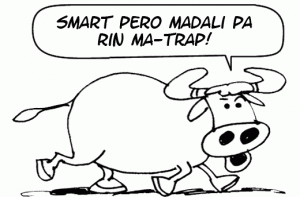US researchers: Like humans, rats can make good decisions

The discovery could help scientists better understand how the brain works in order to help people with autism who have difficulty processing various stimuli the way that others can, said the study’s authors.
Scientists at Cold Spring Harbor Laboratory ran tests that presented rats with a variety of sound and visual cues, and analyzed how the rodents sifted through that information and recognized patterns in order to get a treat.
Comparing the rats to humans who were given similar tests, they found that both groups made decisions that were in line with the “statistically optimal” curve—in other words, the best way possible.
“Statistically optimal combination of multiple sensory stimuli has been well documented in humans, but many have been skeptical about this behavior occurring in other species,” said Anne Churchland, a neuroscientist who led the study appearing in the March 14 issue of the Journal of Neuroscience.
“Our work is the first demonstration of its occurrence in rodents.”
Autism study
The findings suggest that the same evolutionary process may be at play in rats and humans that allows for sophisticated decision-making, and could offer a platform for study of autism spectrum disorders, the study said.
People with autism are often unable to choose which sensory stimuli to pay attention to and which to ignore, making commonplace events like going to the grocery store a potentially insufferable outing.
“We can use our rat model to ‘look under the hood’ to understand how the brain is combining multisensory information and be in a better position to develop treatments for these disorders in people,” Churchland said.
Next, Churchland and her colleagues plan to build on their research by studying the interaction of sensory experiences and memory.
“Now that we have a good animal model in which to investigate these questions, the world—or the brain—is our oyster,” she said. AFP